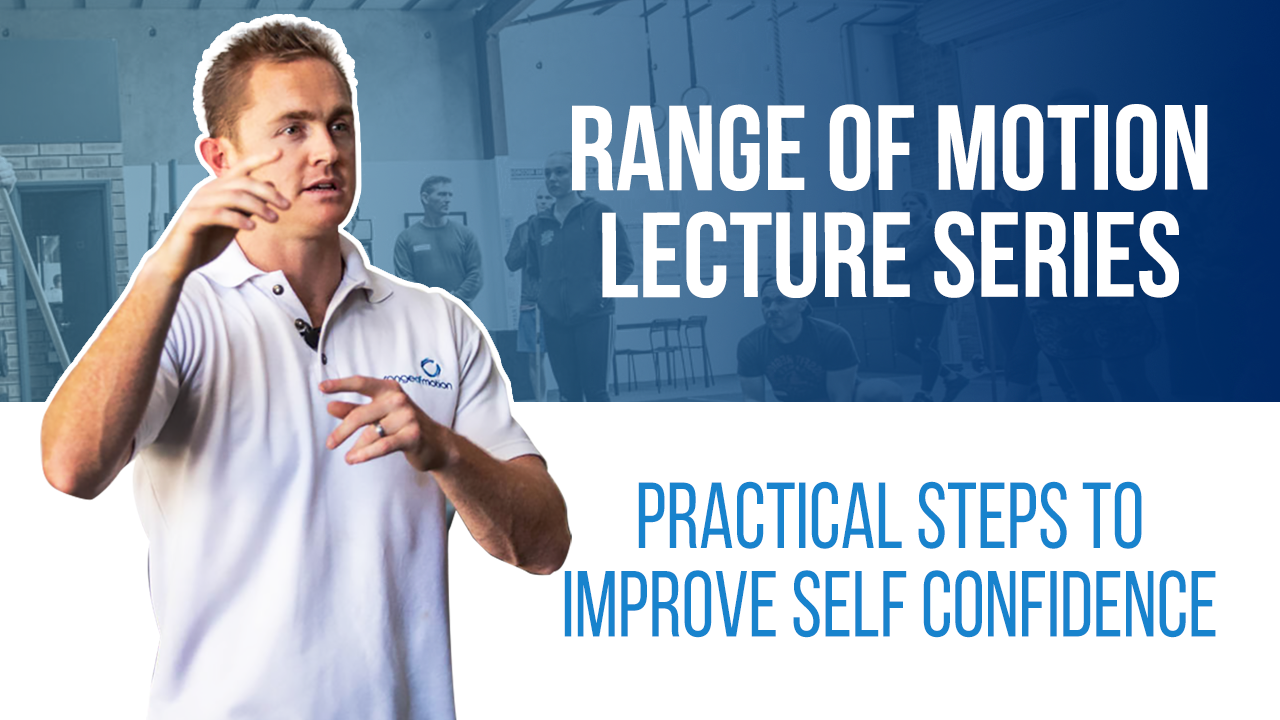Transcribed from video:
– How to build it, so this is practically what you guys can now take away and go and do. Firstly, create situations that allow you to experience success. Make sure that you’re not always missing lifts, that you are making more often than missing a lot. Act confidently. So it’s just what you say, yeah, I’ve got this, I’m feeling good, even if you’re terrified inside. Act confidently, yeah? It’s like the pen between the teeth, fake it until you make it. And also, your nonverbal, your body language. So I’ll quite often say to people, if I’m training or coaching them, take the pain off your face. ‘Cause they’ll be there and they’ll be working hard, and I’ll say take the pain off your face, and they’ll be like, oh yeah. And there’s a lot of research that shows that the amount of pain that you’re showing on your face directly feeds back into how much pain you’re actually feeling. If you can take the pain off your face, it then feeds back in, and you feel less pain. Think confidently, so positive self talk, we’re going to come to self talk. Use positive imagery that we’ve already touched on. Physical conditioning. If you’re well-prepared, and you’ve trained for an event, and you’re standing there on the starting block and you’re thinking there is not a single thing that I could’ve done that I haven’t done to better prepare me for this event, of course you’re going to be self-confident. All right, I’ve done everything I can. And if you’re prepared, if you’re well-prepared, you don’t have to feel a lack of confidence, because you will end up in that event where you should end up. And if you don’t win, it’s just ’cause you weren’t good enough, it’s not ’cause you didn’t try. The confidence should come from your preparation. And finally, have a good plan going in. If you know what your strategy is going to be, you just execute on it, there are no questions to ask as you go.





